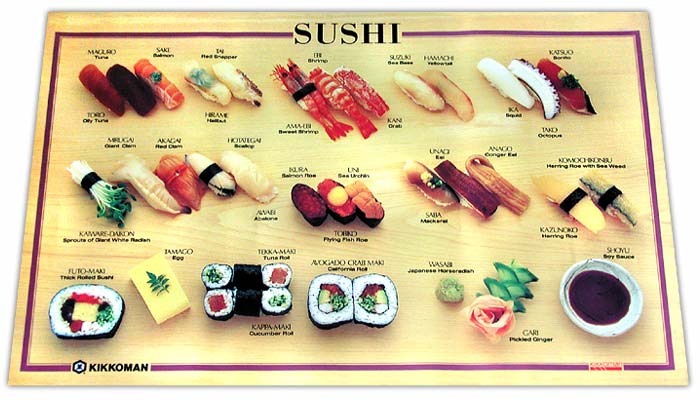If two years ago you asked me for a run-down of my favorite foods, sushi would definitely have made the cut. That rich flavor and unctuous texture of the raw fish was enough to make me drool. Like I'm doing right now thinking about it. You can call me a hypocrite for mocking "living" fudge or raw bread, but some things are meant to be cooked and some aren't. Fish demands a gentle hand at the stove, making it an excellent candidate for being served raw. Bread, on the other hand, should be baked; not dehydrated. But I'm getting off-topic - the point is just how much A and I used to love sushi. Today? That's a different story. It sure sucks to get a conscience. Maybe you can chalk it up to to reading too much when daily reminders of doom-and-gloom, social and environmental collapse leave you morally paralyzed. The more and more we read and heard, the worse we felt about eating seafood. For a sense of the kind of laugh parade that is modern seafood writing, read Mark Bittman's excellent New York Times editorial on the future of fish.
But I'm getting off-topic - the point is just how much A and I used to love sushi. Today? That's a different story. It sure sucks to get a conscience. Maybe you can chalk it up to to reading too much when daily reminders of doom-and-gloom, social and environmental collapse leave you morally paralyzed. The more and more we read and heard, the worse we felt about eating seafood. For a sense of the kind of laugh parade that is modern seafood writing, read Mark Bittman's excellent New York Times editorial on the future of fish.
Recently, the Monterey Bay Aquarium Seafood Watch group released a new sushi-centric version of their great sustainable seafood guide (download PDF). Helpfully, it lists all of the Japanese names for the best fish choices. Unhelpfully, you've probably never seen any of the best choices in a sushi restaurant. On top of that, the few choices you have heard of get pretty specific about fishing practices. I'd wager that if you ask most sushi chefs in America if their tuna is US troll/pole caught rather than longline, you'll get a blank stare. Here in Portland, almost all sushi passes through a bizarrely infamous international cult. Hey, maybe they're a sustainable cult, but with only one supplier for most restaurants, there isn't a lot of choice in terms of fish sourcing.
Meet Bamboo Sushi. Brainchild of a former owner of the indie-chic Masu, it couples hip design with focused sustainability. Not only do they espouse green principles and focus on responsible sourcing, they are actually the first Marine Stewardship Council certified restaurant in the US. I think A and I almost wept when we ate there on Wednesday evening - for the first time in over a year, we went out for sushi. Everything was incredibly fresh and their preparations were really inventive. We swooned over each bite of the rolls and awkwardly sawed our nigiri selections in half with our chopsticks to make sure we all got a taste of everything.
To tide us over between visits to Bamboo, maybe we'll have to branch out into other Japanese foods (it's either that or we make miniature gunkan maki rolls with bay shrimp). Luckily for us, Bamboo offers some inspiration - one of their best offerings is a tsukemono plate of pickled eggplant, cabbage, daikon, onion, ginger, peppers, and squash. Over the weekend, we tried out a Japanese-style quick cabbage pickle, piecing together our own recipe from a mix of different books and websites. The results were great, but pickled cabbage just isn't the same as sushi. At least Bamboo has a happy hour, but is "low priced sushi" really a valid excuse to cut out of work early? It should be.
__________
Simple Cabbage Tsukemono
Adapted from Justhungy.com and Dorothy Lesem's Preserving in Today's Kitchen
1 head of napa cabbage
1 1/2 teaspoons kosher salt
1/4 teaspoon chile flakes
zest of one lemon
1 teaspoon rice vinegar
1 teaspoon fish sauce
1 teaspoon sesame oil
Clean and core the cabbage, chopping the leaves into 1-to-2 inch pieces. Place the cabbage in a large glass bowl and toss with the salt, chile flakes and lemon zest. Cover with a weighted plate that fits inside the bowl and leave to sit in the refrigerator for about an hour. A lot of moisture will be drawn out of the cabbage - drain off the liquid and toss the remaining cabbage with the vinegar, fish sauce and sesame oil. Serve with rice and broth simmered-tofu.
Monday, November 24, 2008
the raw and the cooked
Subscribe to:
Post Comments (Atom)




No comments:
Post a Comment